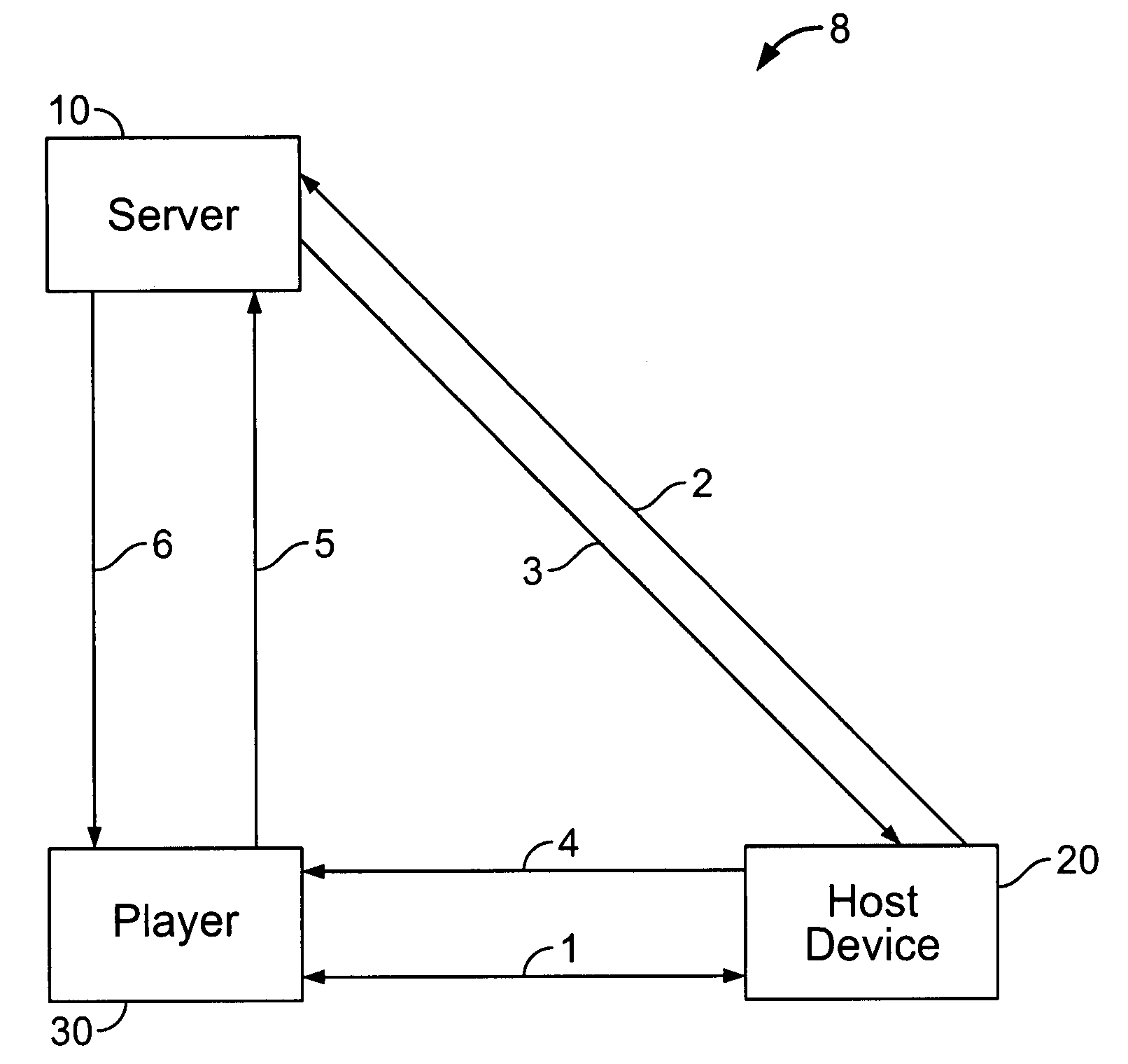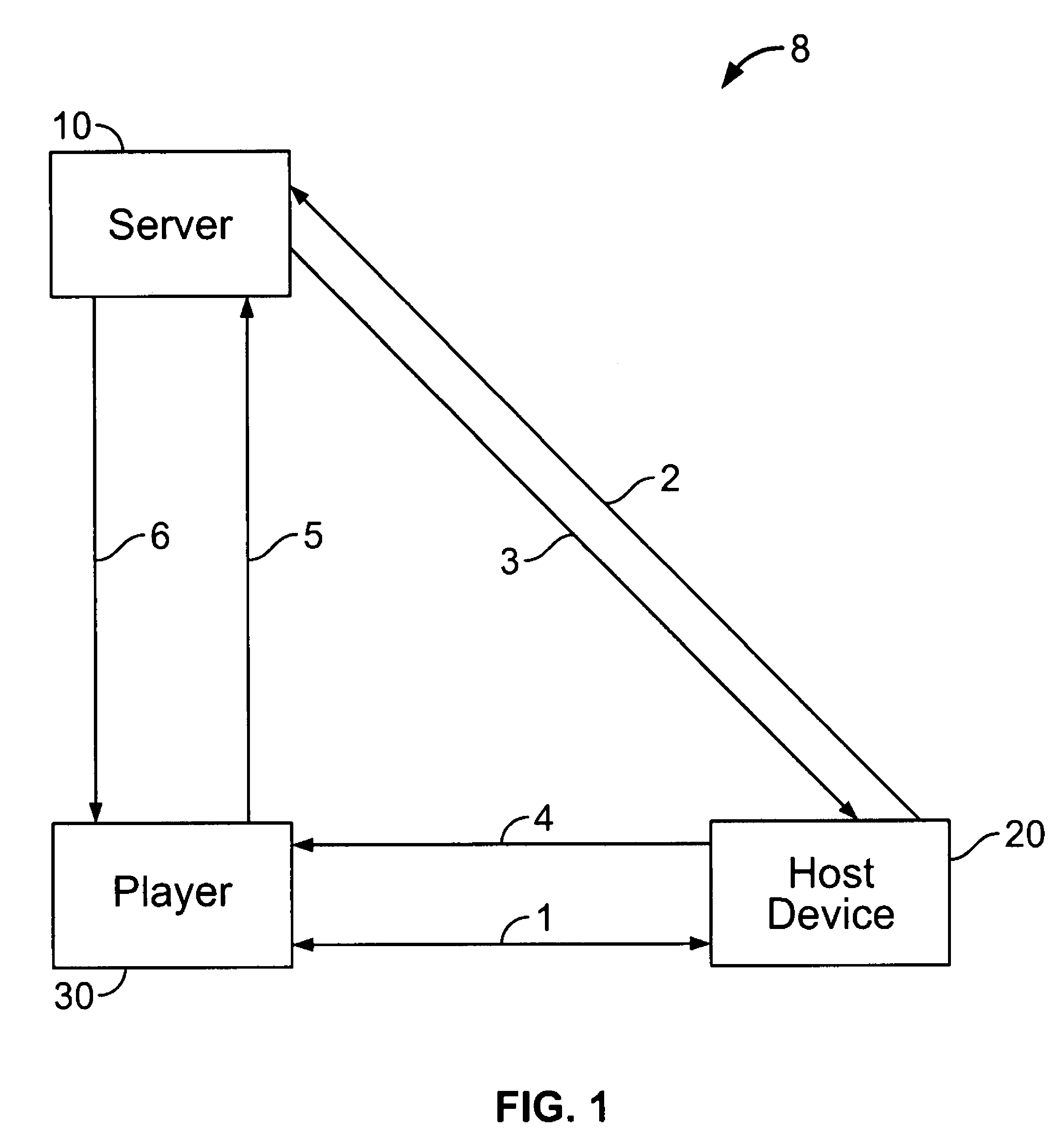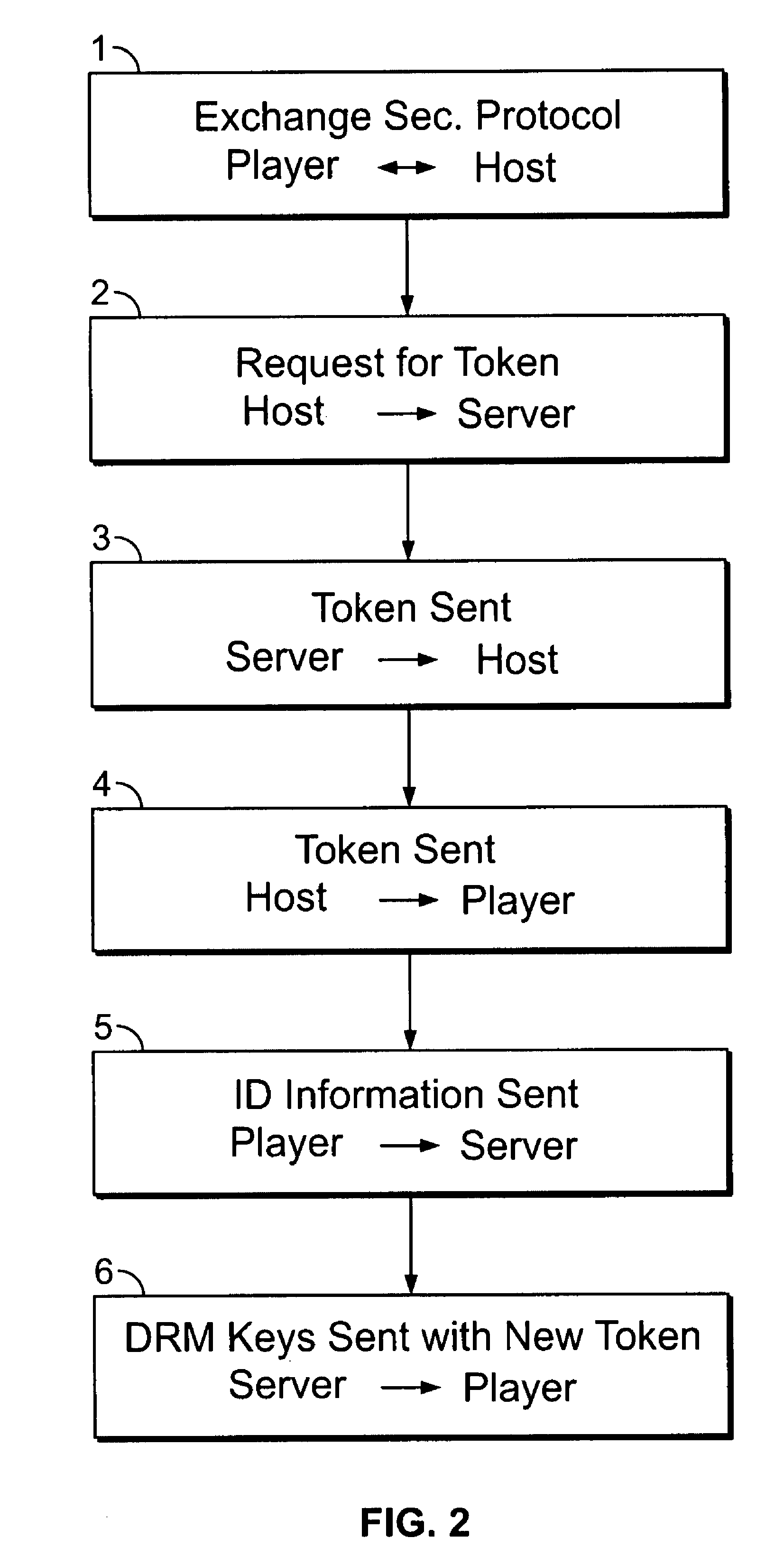Token passing technique for media playback devices
a technology of tokens and media, applied in the field of digital rights management, can solve problems such as preventing content playing, and achieve the effect of preventing content playing
- Summary
- Abstract
- Description
- Claims
- Application Information
AI Technical Summary
Benefits of technology
Problems solved by technology
Method used
Image
Examples
Embodiment Construction
[0013]FIG. 1 shows a media distribution system 8 and use of the present process. The system 8 includes the conventional (central) server 10, which conventionally stores a large library of purchasable media content and the DRM information associated therewith; server 10 may in fact be a set of servers, representing, e.g., an online music and / or video store. In communication with server 10 is the host device 20, of the type described above, and linked thereto via the Internet or other data network. Also in communication for DRM and download purposes with host device 20 is the media player 30, such as a conventional audio (music) and / or video player. Player 30 usually connects to host device 20 by a local connection, such as a USB cable or wireless connection, but this is not limiting. As shown, in some embodiments player 30 also has the capability to directly communicate with the server, both for DRM purposes and also to download media content, such as by an Internet connection. In a ...
PUM
 Login to View More
Login to View More Abstract
Description
Claims
Application Information
 Login to View More
Login to View More - R&D
- Intellectual Property
- Life Sciences
- Materials
- Tech Scout
- Unparalleled Data Quality
- Higher Quality Content
- 60% Fewer Hallucinations
Browse by: Latest US Patents, China's latest patents, Technical Efficacy Thesaurus, Application Domain, Technology Topic, Popular Technical Reports.
© 2025 PatSnap. All rights reserved.Legal|Privacy policy|Modern Slavery Act Transparency Statement|Sitemap|About US| Contact US: help@patsnap.com



